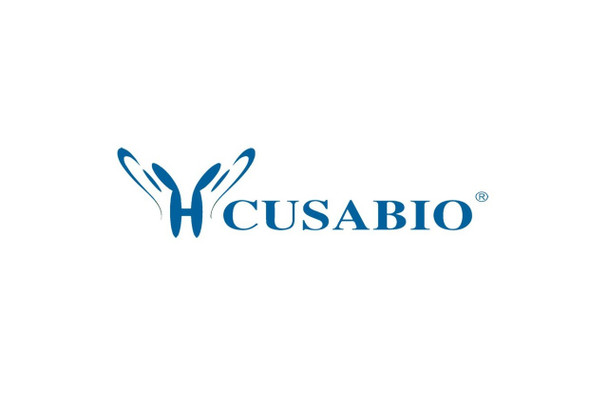Cusabio Zaire ebolavirus Recombinants
Recombinant Zaire ebolavirus RNA-directed RNA polymerase L (L), partial | CSB-EP313164ZABb1
- SKU:
- CSB-EP313164ZABb1
- Availability:
- 3 - 7 Working Days
Description
Recombinant Zaire ebolavirus RNA-directed RNA polymerase L (L), partial | CSB-EP313164ZABb1 | Cusabio
Alternative Name(s): Large structural protein Replicase Transcriptase
Gene Names: L
Research Areas: Others
Organism: Zaire ebolavirus (strain Mayinga-76) (ZEBOV) (Zaire Ebola virus)
AA Sequence: RGSSFVTDLEKYNLAFRYEFTAPFIEYCNRCYGVKNVFNWMHYTIPQCYMHVSDYYNPPHNLTLENRDNPPEGPSSYRGHMGGIEGLQQKLWTSISCAQISLVEIKTGFKLRSAVMGDNQCITVLSVFPLETDADEQEQSAEDNAARVAASLAKVTSACGIFLKPDETFVHSGFIYFGKKQYLNG
Source: E.coli
Tag Info: N-terminal 10xHis-tagged and C-terminal Myc-tagged
Expression Region: 625-809aa
Sequence Info: Partial
MW: 27.9 kDa
Purity: Greater than 85% as determined by SDS-PAGE.
Relevance: RNA-directed RNA polymerase that catalyzes the transcription of viral mRNAs, their capping and polyadenylation. The template is composed of the viral RNA tightly encapsidated by the nucleoprotein (N). The viral polymerase binds to the genomic RNA at the 3' leader promoter, and transcribes subsequently all viral mRNAs with a decreasing efficiency. The first gene is the most transcribed, and the last the least transcribed. The viral phosphoprotein acts as a processivity factor. Capping is concommitant with initiation of mRNA transcription. Indeed, a GDP polyribonucleotidyl transferase (PRNTase) adds the cap structure when the nascent RNA chain length has reached few nucleotides. Ribose 2'-O methylation of viral mRNA cap precedes and facilitates subsequent guanine-N-7 methylation, both activities being carried by the viral polymerase. Polyadenylation of mRNAs occur by a stuttering mechanism at a slipery stop site present at the end viral genes. After finishing transcription of a mRNA, the polymerase can resume transcription of the downstream gene. RNA-directed RNA polymerase that catalyzes the replication of viral genomic RNA. The template is composed of the viral RNA tightly encapsidated by the nucleoprotein (N). The replicase mode is dependent on intracellular N protein concentration. In this mode, the polymerase replicates the whole viral genome without recognizing transcriptional signals, and the replicated genome is not caped or polyadenylated.
Reference: "Sequence analysis of the Ebola virus genome: organization, genetic elements, and comparison with the genome of Marburg virus." Sanchez A., Kiley M.P., Holloway B.P., Auperin D.D. Virus Res. 29:215-240(1993)
Storage: The shelf life is related to many factors, storage state, buffer ingredients, storage temperature and the stability of the protein itself. Generally, the shelf life of liquid form is 6 months at -20?/-80?. The shelf life of lyophilized form is 12 months at -20?/-80?.
Notes: Repeated freezing and thawing is not recommended. Store working aliquots at 4? for up to one week.
Function: RNA-directed RNA polymerase that catalyzes the transcription of viral mRNAs, their capping and polyadenylation. The template is composed of the viral RNA tightly encapsidated by the nucleoprotein (N). The viral polymerase binds to the genomic RNA at the 3' leader promoter, and transcribes subsequently all viral mRNAs with a decreasing efficiency. The first gene is the most transcribed, and the last the least transcribed. The viral phosphoprotein acts as a processivity factor. Capping is concommitant with initiation of mRNA transcription. Indeed, a GDP polyribonucleotidyl transferase (PRNTase) adds the cap structure when the nascent RNA chain length has reached few nucleotides. Ribose 2'-O methylation of viral mRNA cap precedes and facilitates subsequent guanine-N-7 methylation, both activities being carried by the viral polymerase. Polyadenylation of mRNAs occur by a stuttering mechanism at a slipery stop site present at the end viral genes. After finishing transcription of a mRNA, the polymerase can resume transcription of the downstream gene.
Involvement in disease:
Subcellular Location: Virion, Host cytoplasm
Protein Families:
Tissue Specificity:
Paythway:
Form: Liquid or Lyophilized powder
Buffer: If the delivery form is liquid, the default storage buffer is Tris/PBS-based buffer, 5%-50% glycerol. If the delivery form is lyophilized powder, the buffer before lyophilization is Tris/PBS-based buffer, 6% Trehalose, pH 8.0.
Reconstitution: We recommend that this vial be briefly centrifuged prior to opening to bring the contents to the bottom. Please reconstitute protein in deionized sterile water to a concentration of 0.1-1.0 mg/mL.We recommend to add 5-50% of glycerol (final concentration) and aliquot for long-term storage at -20?/-80?. Our default final concentration of glycerol is 50%. Customers could use it as reference.
Uniprot ID: Q05318
HGNC Database Link: N/A
UniGene Database Link: N/A
KEGG Database Link: KEGG
STRING Database Link: N/A
OMIM Database Link: N/A









